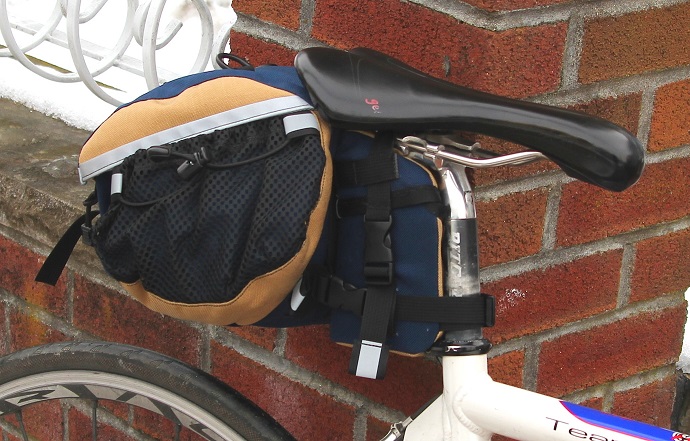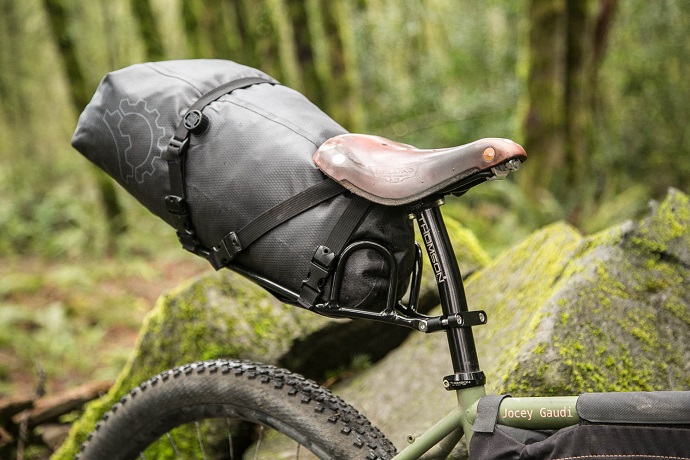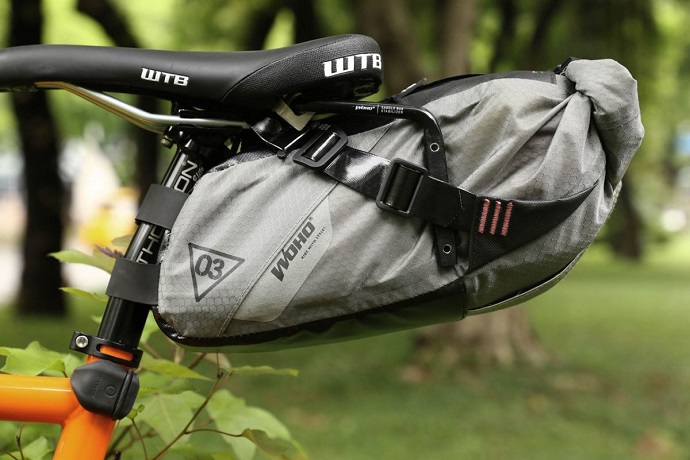
Saddlebags have been used since 700 BC. This piece of luggage has been around longer than two-wheelers themselves, combustion or man powered. The shape of today’s saddle bags may have been altered a little bit to suit modern transportation but their purpose remained the same. Saddlebags are made with versatility in mind as they can be detached and attached very easily and are small enough to be compact and light. The once leather throw overs are know more sophisticated than ever and while they can’t fit a pair of bike shoes, they can surely store road essentials.
What to Look for in a Saddle Bag

Size & Weight
Saddlebags are compact when compared to other types of luggage, but this doesn’t mean you shouldn’t pay attention to the size and weight. Some cycle saddle bags may hang under your seat as they can be quite big too. While these allow you to store more than just your essentials, they can get very heavy and somewhat obtrusive. Bigger bike saddle bags can also affect aerodynamics.
Attachment & Closure
The size of your cycle saddle bag will also determine the attachment and closure system. Smaller, lightweight bags have Velcro straps which make them very easy to secure on the seat post or underneath the seat. You just need to make sure you position the hook and loop in a spot where they won’t make a hole through your shorts. Usually bigger bags make use of a bracket which is placed on the seat post or saddle rails. This makes the cycle saddle bag heavier and easier to fall off when going through an uneven and rough terrain.
Material
There are four types of materials cycle saddle bags are made of: leather, polyester nylon and synthetic rubber. Leather is mainly used for the bag’s exterior as it is a durable material. Polyester is known as tear-resistant which ensures the bag will stay in a good state for a long time. Nylon is a weatherproof and moisture-wicking material which renders it great for keeping your items safe from the elements. Synthetic rubber is a material that provides great rainproof properties.
What to Carry in Bike Saddle Bag?

Tire Levers
A flat tire can be devastating for every cyclist, beginner or not, which is why it’s always good to have a pair of tire levers. This handy little tool can make removing your tire a lot easier, especially those with wired beads and thick sidewalls. You can go either with plastic or steel tire elvers. Steel levers are stronger and longer lasting but they can also damage your rims. Plastic ones won’t do any damage, but they are easier to break.
Inner Tube
Fixing a flat tire cannot be done without a spare tube, just make sure you have one with the correct type of valve. Also, to ensure the tube doesn’t take up a lot of space in the bag, re-roll it with the valve in the middle and the valve cap on.
CO2 Inflator
If all your tire needs is a bit of air, the best item to help inflate it while taking up the least amount of space in your saddle bag is a CO2 inflator. These small canisters full of air can fit in the palm of your hand and all you need to do is attach the nozzle properly and the air will get released into the tube. Make sure you bring a couple more with you in case you don’t do this properly the first time and have the air leak out.
Multi-tool
A multi-tool will not only provide you with the right tools for simple bike repairs on the road, but it will also help save some space in your saddle bag. It’s important that your multi-tool has the correct size Allen-keys, a Phillips screwdriver and a Torx wrench. There are multi-tools that come with a chain breaker tool but you need to know how to use it and have a spare chain link connector too.
Patch Kit
In case you get a double puncture and you didn’t bring two spare tubes, a patch kit can be a true life saver. A patch kit can be vulcanising or pre-glued. The former requires you to apply the glue onto the patch before you stick it on the tube. The latter only requires you to remove a thin layer from the side where the adhesive is before you put it on the tube.
Valve Extender
Airing up aero (high-profile) wheelsets requires a valve extender since the section rim is deep. You can bring a spare tube with a longer valve but a valve extender is a more compact solution. There are extenders that are simply screwed into the valve and others that require the valve to be removed before you attach the extender.



